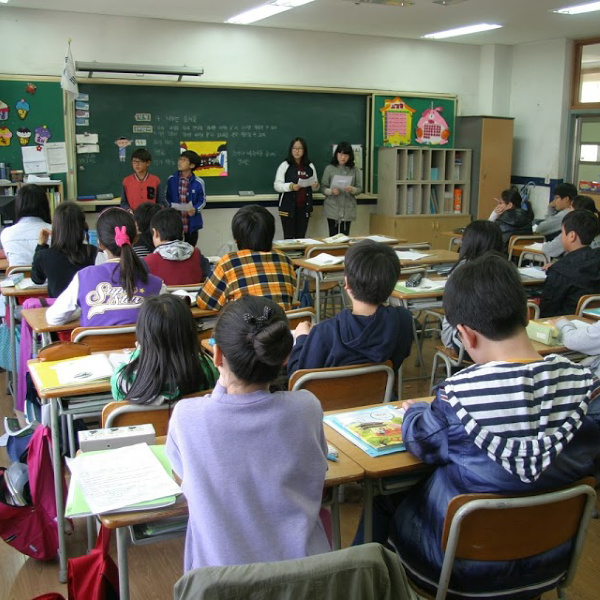21 Steps for School Success!
I cannot believe how fast the school year is zipping by! WOW!! And wouldn’t you love to read 21 Steps for School Success?

Here are 21 Steps for School Success!
First I will give you this list of 21 steps. Then I will talk a little bit about each one individually. So, without further ado, here are the 21 items:
- make long term plans
- spend a week (two if Kinder) on rules and routines at the beginning of the school year.
- clean out your desk
- clean out the cupboards
- organize your grading system
- beef up your student reward system
- plan a week ahead of time on a regular basis
- create a system for parent communication
- consistently use a “to do” list
- create an emergency substitute folder
- create a system (or improve yours) for noting info on each student
- streamline your homework process
- create a reading incentive program
- regularly schedule individual reading assessments
- take at least 15 minutes to eat lunch (no working)
- select only one day per week to stay past an hour after school
- all other days leave after 45-50 minutes after dismissal
- start report cards three weeks before they are due
- create a routine for parent teacher conferences
- spend two weeks to prep for standardized testing (if allowed)
- spend two days reviewing rules and procedures in January
And now I will go into a brief talk about each of the 21 I’ve listed.
– 1- Make long term plans
Begin today and firm up your long term plans…or create them if you haven’t already. If you’re a new teacher, I understand if you haven’t done this yet (I was the same my first year). BUT it will really help you achieve peace of mind when you get everything mapped out for the remainder of the year. I have another article about this, so please go and read it if you need to learn more about this. Here is the link:
The Instructional Benefits of Long-Term Planning! Do You Know What They Are?
– 2 – Spend a week on rules & routines
Most likely you have heard about this tactic needed to have a successful year. But I want to be sure to mention it since it is crucial. Spend at least a week at the beginning of the year on rules and routines (and make that 2 weeks to a month for Kindergarteners). When your class knows the rules and follows them routinely, your ability to teach and students to learn increases exponentially!
– 3 – Clean out your desk
The mid-year point is a great time to clean out your desk. If you’ve been teaching remotely from home the entire time, then clean up the area that you use for instruction. For some of you, I’m pretty sure there are things stacked up that you are finished using and can pack away until next year.
But if you’re at school now, then take an hour (or less) one afternoon to clean out your desk. There is such a sense of order that you get when things are cleared up and put where they belong. Then when you return in January, your desk area will be ready to go! WIN-WIN!!

– 4 – Clean out the cupboards (cabinets)
This item is similar to the previous one about cleaning out your desk. If you haven’t worked in your room yet this year, the cabinets are probably in pretty good shape. But if you didn’t organize them at the end of last year (who had time with Covid-19?), now would be a good time to get this done, before you and the students return.
– 5 – Organize Your grading system
If you are a beginning teacher, or one that’s just switched grade-levels, you may still need to firm up your student grading system. Rethink how you have structured it and compare that to how the students are doing so far this year.
If you do decide to change a few things about your grading system, be sure that you explain it well to the students. And send a notification to parents (an email is fine) to explain the new system AND why you decided to change it.
– 6 – Beef up your student reward system
Now that the beginning of the year is just about over, it is time to review and beef up your reward system. Adding something new to the mix, or changing it up a bit invigorates students and gets them motivated all over again.
I know this is especially challenging if you are teaching remotely currently, but put on your thinking cap, brainstorm with your grade-level team and see what new things you can come up with.

– 7 – Plan a week ahead of time on a regular basis
If you haven’t already created a process of planning ahead to time on a regular basis, use this time to get this practice in place for 2021 and beyond. I truly believe that this one habit/strategy is in the top 3 for being organized as a teacher. I have written about this in other articles. Here is one where I describe it in detail. Be sure to bookmark it or read it now.
Teacher Organization – How to PREPARE and Stay Focused
– 8 – Create a system for parent communication
A structured system for parent communication takes the guess work out of …when do I send a group email? which parents should I contact this week? etc. This is an often overlooked strategy in the 21 steps for 2021 success. When you have the system mapped out ahead of time, there is no guess work involved. You have a plan and you a assured it is fair.
Another benefit of this is that all your students’ parents are getting regular positive communication from you which makes it so much easier when you have to contact one of them because of a problem or issue.
– 9 – Consistently use a “to do” list
Using a “TO DO” list has to be my favorite organizational tip. I still use this daily even though I am now at a Community College (see ABOUT ME for more info on that).
I love to list out each task and then mark it off once I’ve accomplished it. I have used a “running list” for over 30 years. I usually rewrite the list each evening before leaving for home so that I have a “fresh” list in the morning. But when I don’t have time to do this, I just do it first thing in the morning.
My tip on this is to list each individual item. So for example; run off the tests, staple the tests together are listed as two items. Now, do you have to write your “to do” list this way? Of course not, but I’m just letting you know how I do mine. It’s so rewarding to be able to cross each item off as it is accomplished.

– 10 – Create an Emergency Substitute Folder
If you haven’t already created an emergency substitute folder, then I highly suggest that you get this done SOON! This one strategy can end up being a life saver. And the plus part of it is that if you don’t end up needing or using it, you will have it ready for next September (assuming you stay in the same grade level).
I wrote an entire article on making you emergency substitute folder, so I’m not going to repeat myself here. If you need or want to find out about it, read it here:
What Needs to Be in a Substitute Folder
Before I continue on with the last half of this list, I want to point out that there is a form to complete to the right of this article where you can get a FREE download of a Classroom Routines Checklist. And there is another place at the end of the article where you can complete a form to get a FREE downloadable list of 101 Teacher Tips.
– 11 – Create a System for noting information on each student
It took me a few years before I developed a system for keeping notes of information about each student. The system that ended up working for me was to use a spiral notebook where I used a tab for each student with about 3-4 pages for each child. Then I could write annotated notes, attach sticky notes I had written throughout the day, and other information I want to remember.
You may find a different system that works better for you. Some of you are really extremely competent in technology, so perhaps you could utilize talk to text technology to create pages for each student. I just don’t know how to do that – so go to it!! 🙂
– 12 – Streamline Your homework process
Now that half the year is over, you should have an idea of how your homework process is working. If you are completely remote right now, this will be a bit different than if you are teaching in person right now.
Think about what is working and what is not going well. How can you add to what is working and eliminate what isn’t? Can you make the process have a pattern? Monday- one thing, Tuesday-another thing, etc. and then have this pattern repeat each week.
The bottom line, is do what works for you and your students, but try to use this time to streamline the system.

– 13 – Create a Reading incentive program
Does your class or grade-level have a reading incentive program? If not, maybe you should consider creating one. Again, now that you’ve been with your students for half a year, you should have a pretty good idea on the type of reading incentive program will work in your class.
If you are looking for some ideas for this, my most recent article is about this very subject. Although I discuss reading during distance learning, many of these ideas work well for in-class learning as well. Here is the link:
Ways to Encourage Your Students to READ during Distance Learning!
– 14 – Regularly schedule individual student reading assessments
If your individual reading assessments have been haphazard and whenever you can squeeze them in…then now is the time to get this organized and scheduled. Whether you are doing fluency tests or just checking the skills of beginning readers, you should create a schedule so you get these done quickly and don’t accidently skip someone. Now, that’s a super item in your 21 steps to 2021 success!!
– 15 – Take at least 15 minutes to eat lunch
Don’t forget to take your lunch. If you absolutely have to get a task done at lunch, try to at least sit down for 15 minutes to eat and catch your breath.
– 16 – Select only one day per week to stay past an hour after school
I recommend selecting one specific day that you allow yourself to stay late and get work done. Knowing that you have this day scheduled or saved for this, you will get through your week less stressed. This strategy only works well in conjunction with #17 below.
– 17 – All other days leave after 45-50 minutes after dismissal
Once you’ve selected the one day a week you stay late, vow to leave on all the other four days of the week on time. What “on time” is will look different for each of us, but I suggest on later than 45-50 minutes after student dismissal time.
If you are working remotely by teaching from home, I HIGHLY suggest that you take a walk around your neighborhood at the end of your teaching day. You need to get out of the house for a little while to save your sanity.
Continuing your 21 steps to Success!
– 18 – Start report cards three weeks before they are due
This is a tip I started doing after about 10 years of teaching. I wish I had learned it earlier in my career. Now that most report cards are digital, it may not be necessary to allow three weeks, but you should begin at least two weeks before. During this time period, you can average grades you already have available, document behavior and give a citizenship grade, add your comments.
When you do those things ahead of time, then the final things you need to add just before you are to distribute them is the attendance count and the final grades.
– 19 – Create a routine for parent teacher conferences
New teachers often stress about parent communication, especially parent teacher conferences. You have probably already had your first round of conferences. So, good for you.
Now you have an idea how they went. To be ready for the next round of conferences, make a plan. Brainstorm the items that you want to cover with all parents, and then have those things ready. They might be things like: district assessment scores, report card grades, certain classroom tests, projects.
Next, look through your notes on each student and notate which items you wish to discuss with parents. Items like this might include: behavior issues, problems making friends, academic concerns, emotional issues.
One tip I’d like to share that I learned from a very experienced Kindergarten teacher is to ask the parents about the child’s gestation and birth. This is especially true if you teach K-3rd. Make it genuine and casual. “I’m curious, were there any issues you recall about Josey’s birth?” You’d be amazed some of the things you learn which might impact learning. I had one student that qualified for extra IEP help due to this birth incident – and the parents weren’t even aware of it.
– 20 – Spend two weeks to prep for standardized testing (if allowed)
This tip will be more useful once the COVID-19 situation is over. But once your district returns to normal standardized testing, set up a schedule to prep for this testing for at least two weeks prior to the tests (IF YOUR DISTRICT ALLOWS YOU TO DO THIS). Ask your team partners or the office if teachers prep for the testing.
Items you can cover during testing are: test taking strategies, content area learning (highlight the standards that have more than one test question about it), reading a multi-paragraph selection for main idea and details. I have an article about this that you can read here:
How to Prepare for Standardized Testing
– 21 – Spend two days reviewing rules and procedures in January
My final tip – #21 is to review your rules and procedures again in January. After your students have had two weeks or more off, you need to conduct a full review again. If your students are 4th grade and up, you can review this quickly and move on. But if you have young students, I suggest you spend AT LEAST a few hours reviewing rules and procedures. Make it a game if that makes sense to you. Just be sure you do it so that your new year (as in January – June) is off to a great start. And there you have it – your 21 Steps for 2021 Success!
Until Next Time,







